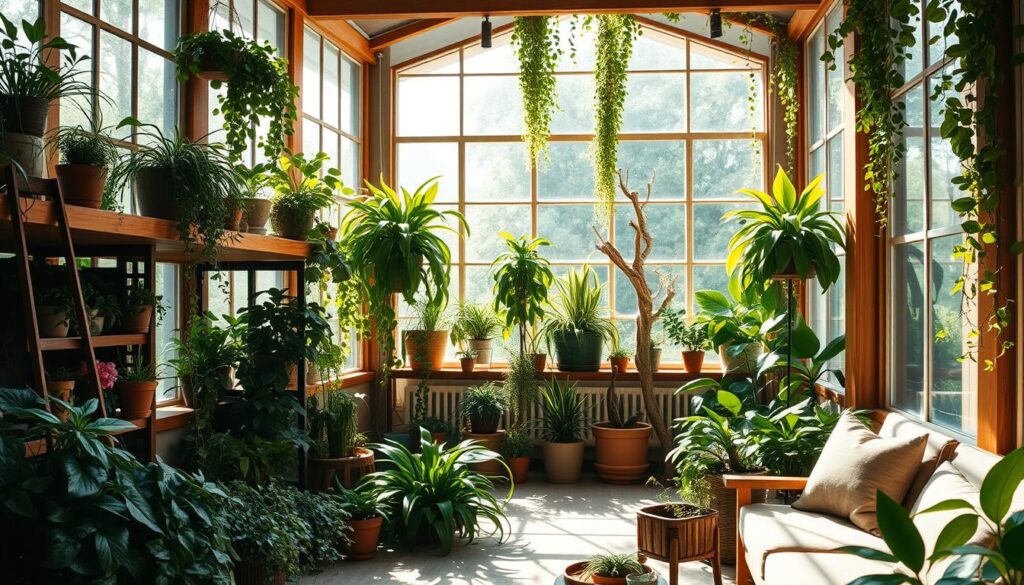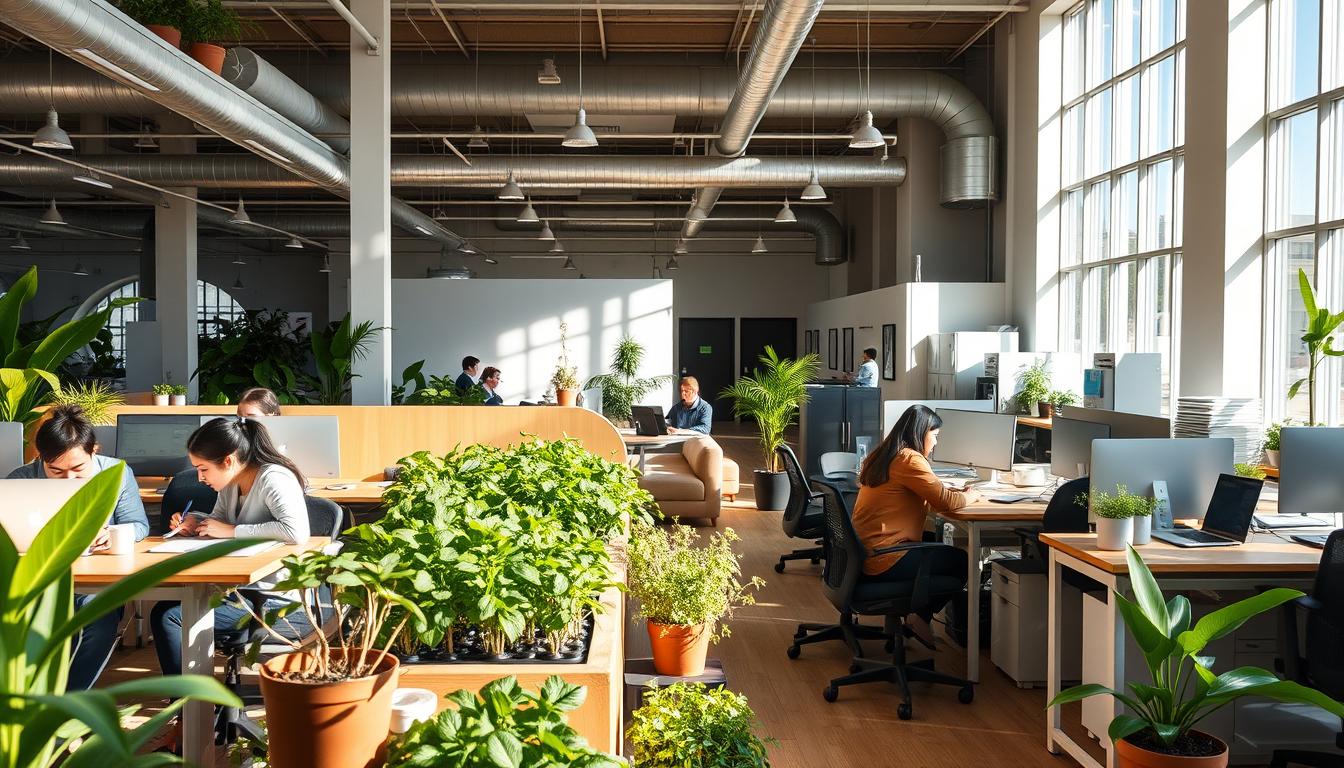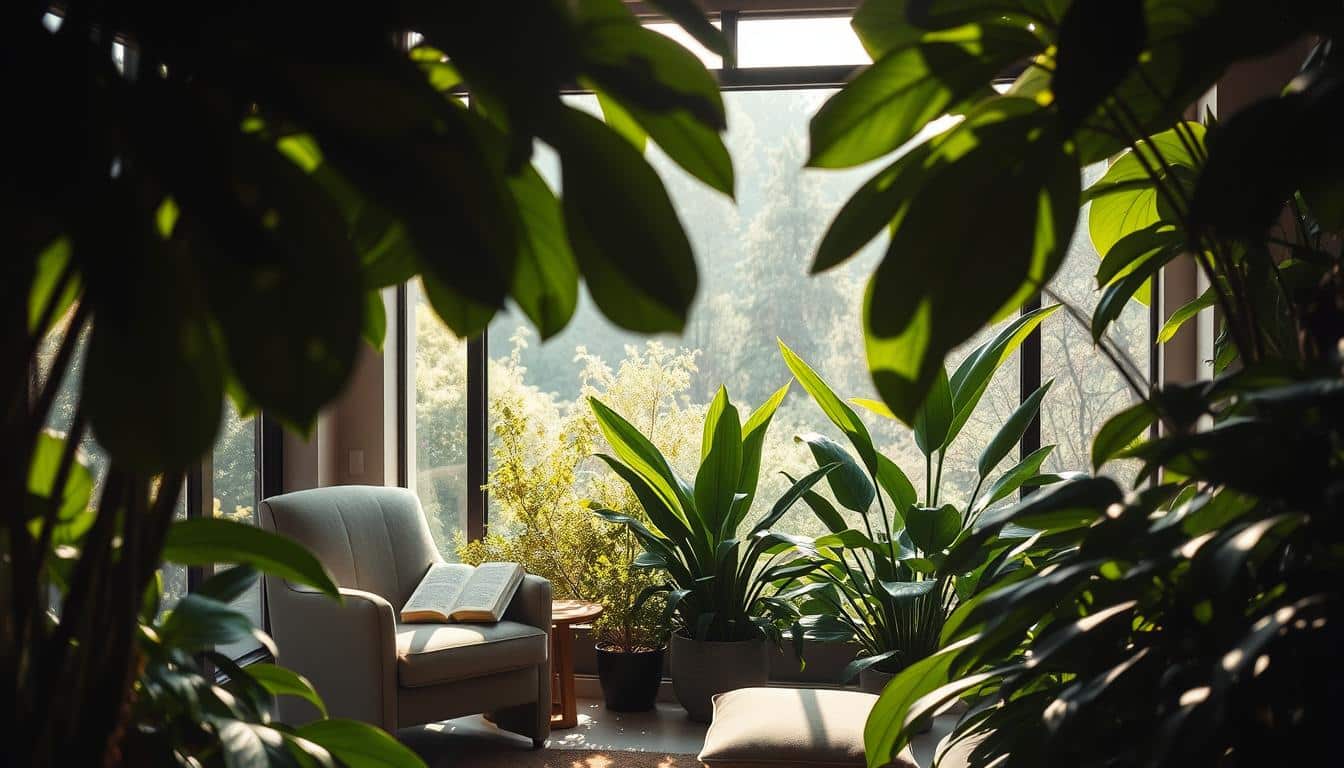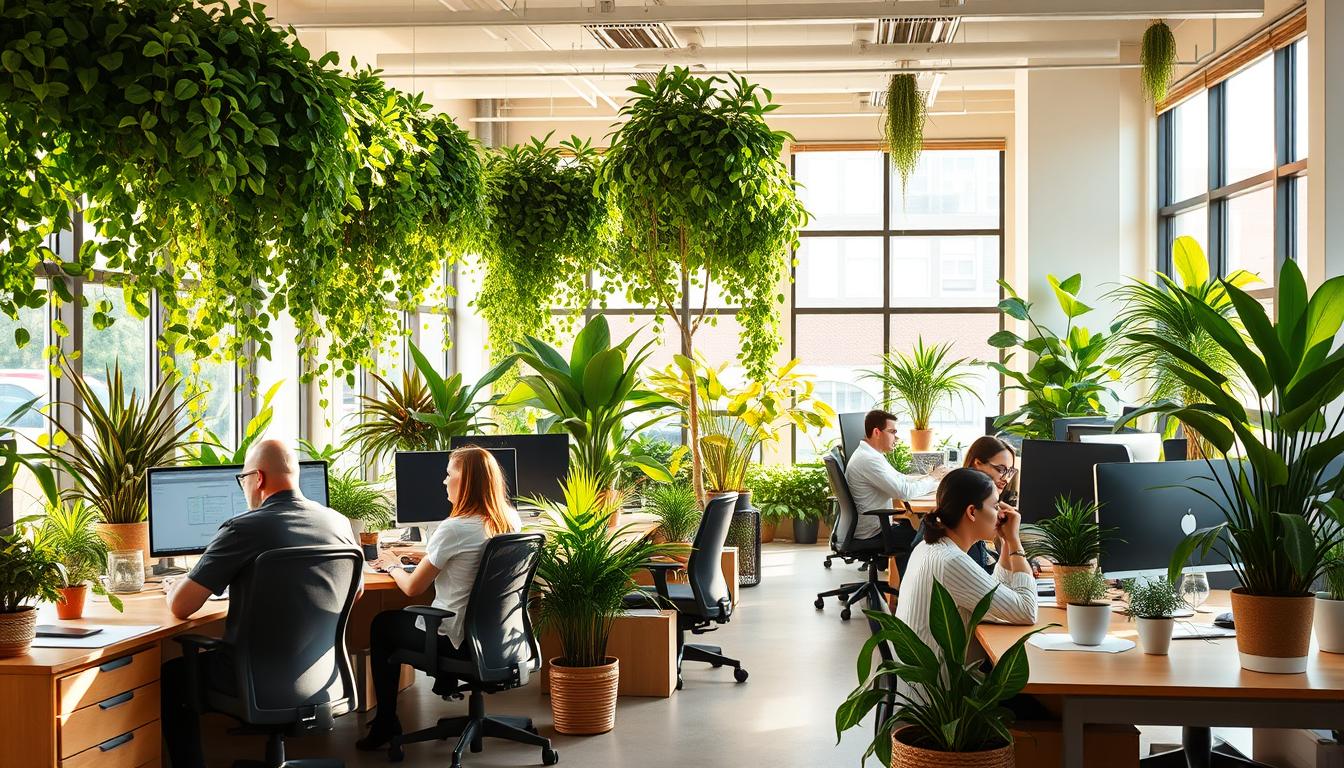In our busy lives, making our homes calm is more important than ever. This guide shows why indoor nature is key to feeling good. Adding nature into our homes boosts well-being and peace.
Biophilic design principles show how plants and natural elements can improve our homes. They provide simple steps to better indoor living.
Understanding Indoor Nature and Its Impact on Comfort
Indoor nature is key to making our living spaces comfortable and improving our well-being. It means adding natural elements like plants, sunlight, and water inside our homes. These elements are part of a design called biophilic environments. They help to create a place that feels peaceful to us.
Definition of Indoor Nature
Indoor nature means bringing the outside elements into our homes. This includes things like:
- Indoor plants that clean the air and make us feel better
- Natural light that makes rooms bright and gives us energy
- Water features that relax us with their sounds and looks
- Natural materials that look great
Studies have shown that having these elements at home makes us feel calm. They are good for our body and mind.
Connection Between Indoor Nature and Well-being
Many studies have found that indoor nature is good for our well-being. Natural elements make us happier, lower stress, and improve the air we breathe. Adding plants and other natural things to our homes makes them more comfortable. It also makes us happier with where we live.

The Science of Comfort Optimization through Indoor Nature
Understanding how to make our living spaces more comfortable is key. We need to think about how warm or cool places feel and how nature affects our minds. Both things help shape how good we feel inside a building.
Thermal Comfort: The Role of Environmental Factors
Feeling just right temperature-wise is crucial and depends on different things. Things like the air’s temperature, how moist it is, and how it moves matter. ASHRAE says that if we get these right, not only will we be more comfortable, but we’ll also use less energy for heating or cooling our places.
Psychological Effects of Nature on Comfort Levels
Adding nature into indoor spaces can make us feel more at ease. Research shows that being around greenery can make our heartbeats slow down and stress less. So it’s important to include nature in our indoor designs to feel better.
Biophilic Design Principles for Comfort Optimization
Adding nature into your home makes it a peaceful place. Biophilic design uses nature’s beauty to make indoor areas more comfortable and livable. It includes indoor gardens, living walls, and big windows, letting people enjoy nature’s calming effects up close.
Incorporating Natural Elements into Home Design
Natural elements in home design help create a calm space. Here are some ways to do it:
- Utilizing large windows to flood the interior with natural light.
- Creating indoor gardens or greenery walls to bring vibrant plant life indoors.
- Choosing natural materials, such as wood and stone, for flooring and furnishings.
Enhancing Spatial Awareness through Nature
Adding nature to a space changes how we see it. Natural light and views of greenery can boost brain power and make areas feel open. This bond with nature makes any space seem bigger, welcoming, and peaceful.
Benefits of Plants in Indoor Spaces
Adding indoor plants to our living areas brings big benefits, like better air and balanced humidity. These plants make our rooms look nice and feel comfy. They help us feel good too.
Air Quality Improvement through Indoor Plants
Plants indoors clean the air. They soak up bad stuff like formaldehyde and carbon monoxide and give out oxygen. This clean air is better for our health and mood. Plants like peace lilies and spider plants are really good at cleaning the air.
Humidity Regulation and Its Importance
Keeping indoor humidity at 40-60% makes us feel comfortable, especially when it’s dry. Plants help manage moisture by releasing water vapor. This makes the air less dry, cuts down on irritation, and keeps breathing problems away. With plants, we can have a cozier and nicer living space.
Creating a Natural Indoor Environment
Creating natural indoor spaces needs careful planning and smart choices. Using natural light and sustainable materials is key. They make spaces look beautiful and feel good. These elements together make places inviting, comfortable, and positive.
Best Practices for Integrating Natural Light
Letting in natural light can make people feel happier and more productive. To do this, you can:
- Incorporate skylights for overhead lighting
- Put in big windows to merge indoor and outdoor spaces
- Use shiny surfaces to spread light around
These methods help create a bright atmosphere. They also keep us connected to the world outside.
Utilizing Natural Materials for Building and Decor
Using sustainable materials like wood, stone, and clay changes indoor spaces. These materials offer:
- Beauty that feels natural
- Insulation that helps with temperature control
- A deep connection to nature, enhancing our experience
Choosing these materials makes spaces not just prettier but also more comforting. It supports our well-being.
Comfort Optimization through Indoor Nature
Creating a welcoming indoor atmosphere is key for better comfort. By using colors and textures in our spaces, we connect with nature. This connection can make us feel happier and more at peace.
Using Color and Texture to Mimic Nature
Adding earthy colors and natural textures to a space brings calmness. Think muted greens, soft browns, and gentle blues, like a quiet outdoor scene. Choosing materials that remind us of nature is important for this effect.
- Wood finishes to introduce warmth.
- Stone accents for a grounded feel.
- Soft fabrics to enhance comfort.
Incorporating Water Features for Serenity
Water features like fountains or aquariums make any area more peaceful. They add moisture to the air and make relaxing sounds. These elements turn any room into a soothing escape.
Innovative Materials for Indoor Nature Design
Creating beautiful indoor spaces is important. We use special building materials to help. These materials, like geopolymer composites, are great for the environment. They make the air better and control moisture indoors. This part talks about how these materials and new building methods help make better, eco-friendly designs.
Benefits of Geopolymer Composites for Indoor Humidity Control
Geopolymer composites are amazing for controlling moisture. They keep indoor air just right, which is good for our health. They are also good for the planet. This matches well with new design ideas that care about nature.
Advanced Technologies in Sustainable Building Materials
Nowadays, building in a way that’s good for Earth is key. We have new methods that make building materials better for the environment. These methods also improve the air inside and help reduce harm to the planet. It’s about making living spaces that go well with nature, for a better tomorrow.
Case Studies: Successful Indoor Nature Implementations
Looking at real-world architecture shows how indoor nature makes places more comfortable. These examples show different ways to use nature in design. This makes areas healthier and saves energy. They also blend nature right into buildings.
Examples of Comfort Optimization in Modern Architecture
Some buildings are great examples of using nature inside. Looking at these cases shows:
- The Bosco Verticale in Milan, with trees on balconies improving air and keeping heat or cold out.
- The Eden Project in the UK, creating a big ecosystem under dome-like structures for plants and people.
- The Amazon Spheres in Seattle, mixing plant life and work areas to boost creativity and work output.
Lessons Learned from Exceptional Designs
Studying these great designs teach us key points. We learn:
- Using nature in ways that fit the place and look good is smart.
- Working with landscape experts helps mix greenery with buildings well.
- Choosing green materials connects people to nature and helps the planet.
Conclusion
Bringing nature indoors greatly improves our comfort and well-being. This guide showed how biophilic design, or including nature in our spaces, makes indoors better. By adding plants and natural materials, we don’t just make spaces look good. We also improve the air, control humidity, and make ourselves feel happier and more relaxed.
Looking ahead, what we’ve learned can help us create better, greener indoor spaces. With new materials and design ideas, we can make our inside spaces work well and look beautiful. This is a reminder that choosing to bring nature inside is good for our health and happiness.
The more we use these ideas, the better our indoor spaces will become. Making nature a big part of our indoor life creates places that are good for our minds and bodies. It changes how we live our everyday life for the better.



